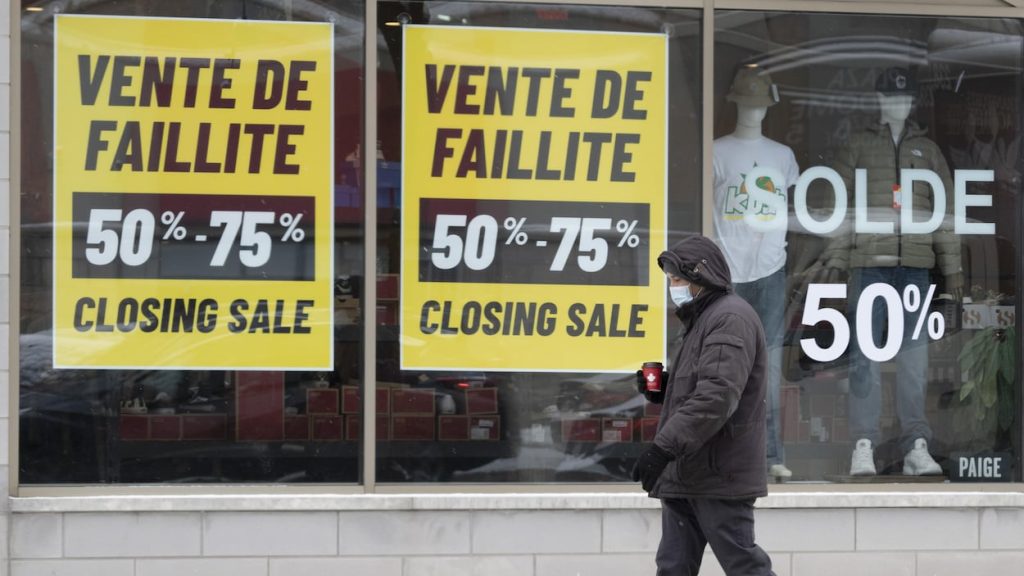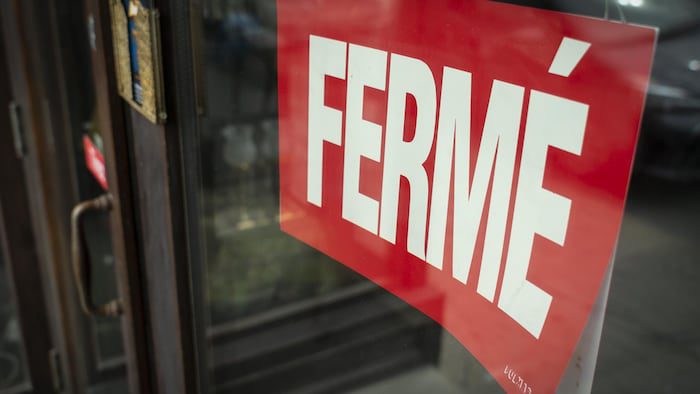
In total, 900,000 Canadian businesses took out a COVID loan. Preliminary data from the CFIB's survey of its members show that 84% of them have repaid amounts between $40,000 and $60,000. But of that number, 24% had to borrow money to do so.
The figure, which will be revised upwards from the survey to be published in the coming days, counted 6% of respondents in the refinancing process.
Furthermore, 8% of businesses say they approached financial institutions but failed to qualify, while 60% of respondents repaid their COVID loan by drawing on their capital.
The government offers borrowers an option to repay the full amount of the loan within three years at an interest rate of 5%, but they do not benefit from the subsidy included in the loan. $10,000 to $20,000 depending on the case. Therefore companies are interested in finding another solution to avoid losing this amount.

Jasmine Gwennett, Vice President of National Affairs at the Canadian Federation of Independent Business (CFIB)
Photo: Radio-Canada / Hugo Belanger
Unfavorable economic context
there CFIB It will be more and more confirmed SMEs In red are their accounts. This is a very worrying situation because if the companies go to their banking institution, they have to pay very high interest.
asked Jasmine Gwennett, vice president of national affairs.
We've heard of interest rates of 8%, 10% or 12% from major financial institutions, but if it's a third party, they could be higher.
He mentioned.
The general level of debt is already high, making the situation even more alarming. According to still CFIB60% SMEs Still has an average debt tied to the pandemic of more than $100,000.
The economic context makes the task even more difficult for companies that are very fragile. In the expenses column, they have to deal with rising expenses such as rent, fuel, transportation or increased salaries, among others. On the revenue side, consumers are spending less and this is particularly penalizing restaurant and hotel owners, many of whom have taken on COVID loans.
It is difficult to be profitable when all budget items are increasing, debt levels are very high and revenues are non-existent.

According to the CFIB, 250,000 businesses are at risk of bankruptcy because of Ottawa's refusal to postpone the payment date of CEBA loans.
Photo: Radio-Canada / Simon-Marc Charron
Number of bankruptcies to look out for
In 2023, the number of business bankruptcies will increase by 41.4%. This is the biggest increase in 36 years since the Office of the Superintendent of Bankruptcy (OSB) has been keeping statistics. According to André Bolduc, president of the Canadian Association of Insolvency and Reorganization Professionals, a licensed bankruptcy trustee, 2024 will begin on the same basis.
Many of his association members use his services because they can no longer afford their debts. In the best case scenario, it is possible to consider debt restructuring options. For others, It's a sale of inventory or worse, bankruptcy
Jasmine Gunet says.
2023 is sure to have a lot of calls and this year, we will probably have the same volume, if not an increase.
Government budgets are eagerly awaited
According to Jasmin Guénette, the main short-term solution Reduce tax burden SMEs
. For example, he is thinking of reducing employer contributions to pension contributions or employment insurance. Another option is to raise the deduction threshold for small businesses. He wants no increase in carbon tax on April 1.
The next budgets, whether federal or provincial, are therefore eagerly awaited. They are traditionally presented in the month of March. Meanwhile, Mr. Guénette monitors the morale of his troops. According to the survey, the confidence level of entrepreneurs is lowest, The close of the 2008-2009 recession
he concluded.





More Stories
Sportswear: Lolle acquires Louis Garneau Sports
REM is still innovative enough to foot the bill
A trip to the restaurant with no regrets for these customers